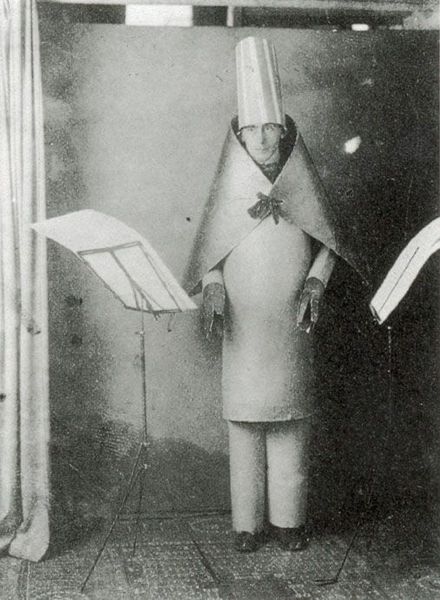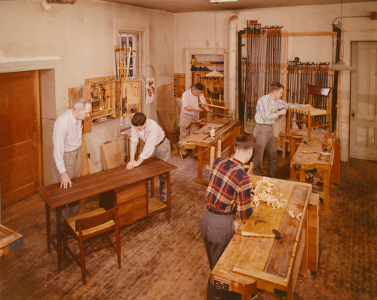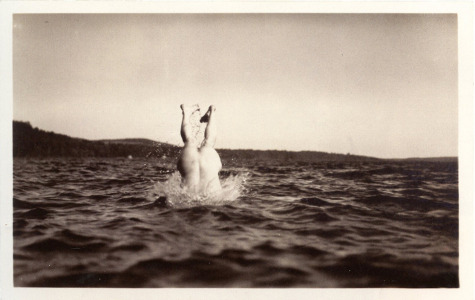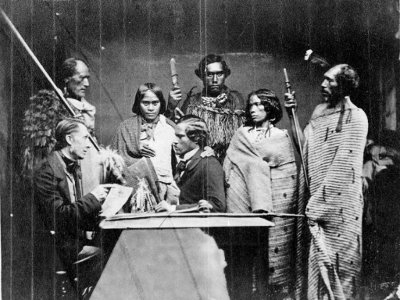Hugo Ball at the Cabaret Voltaire, Zurich, 1916
photographer unknown
background
I wanted to use Pure Data to perform some kind of human function, to reveal some form of judgement or thought process which would speak about its own inability to do so. And so I wanted to create some kind of patch that would interest itself in the nature of computer programming, while also displaying some level of self awareness.
I decided to pursue the idea of a dadaist rearrangement of text based on images. I was thinking about the ways in which the Dadaists used the idea of automatic and chance-based occurances in order to remove or at least diffuse their own artistic control and intention over an artwork. This led me to the idea that images could be an interesting starting point to perform and compose and thereby create the illusion of some form of personality or discernmen.
Moses
My patch is called Moses, it composes haiku poetry, or rather, recomposes the lines of poetry that are available to it in response to an image.
The images used are all sourced from the internet and have no known photographer. In selecting these images I am interested in the idea of a deficient human element. Found images can sometimes feel personal to us and the narrative elements reveal themselves quickly. At the same time, an everyday or observed feeling reminds us that we can detach ourselves from them and their subjects quite readily.
The text being used is sourced from Japanese haiku poetry, translated into English. The poets include Buson (1715-1783), Basho (1644-1694), and Buson (1715-1783) and other major poets to make use of the Haiku.
The Haiku often presents a contrast or a 'cutting' aspect, including the juxtaposiition of text and image. This is a key aspect of my use of the two, and allowing a pure data patch to perform a simple and traditional act.
how does it work?
Moses reads the RGB levels in an image by using the 'pix mean color' object. These levels are 'unpacked' and channeled into three different but identical sub-patches. Here, the levels filter through an number of 'moses' objects that result in the incoming value aligning with one of sixteen possible numbers. These numbers are outputed from each of the three identical sub-patches into another sub-patch. This sub-patch uses a 'textfile' object. The three incoming numbers dictate which lines from the textfile are to be used. These lines of text are extratced from the file and printed into the dialogue window.
documentation
On the death of his child
And dry my dreaming but still ...
Insatiable fleas
Women planting rice
Drawn up from my frozen well ...
Weird hollow echo
Issa stepchild bird
Dew evaporates and all our world is dew ...
Black cloudbank broken
Wild geese write a line
Flip-flapping across the sky
But their ancient song




